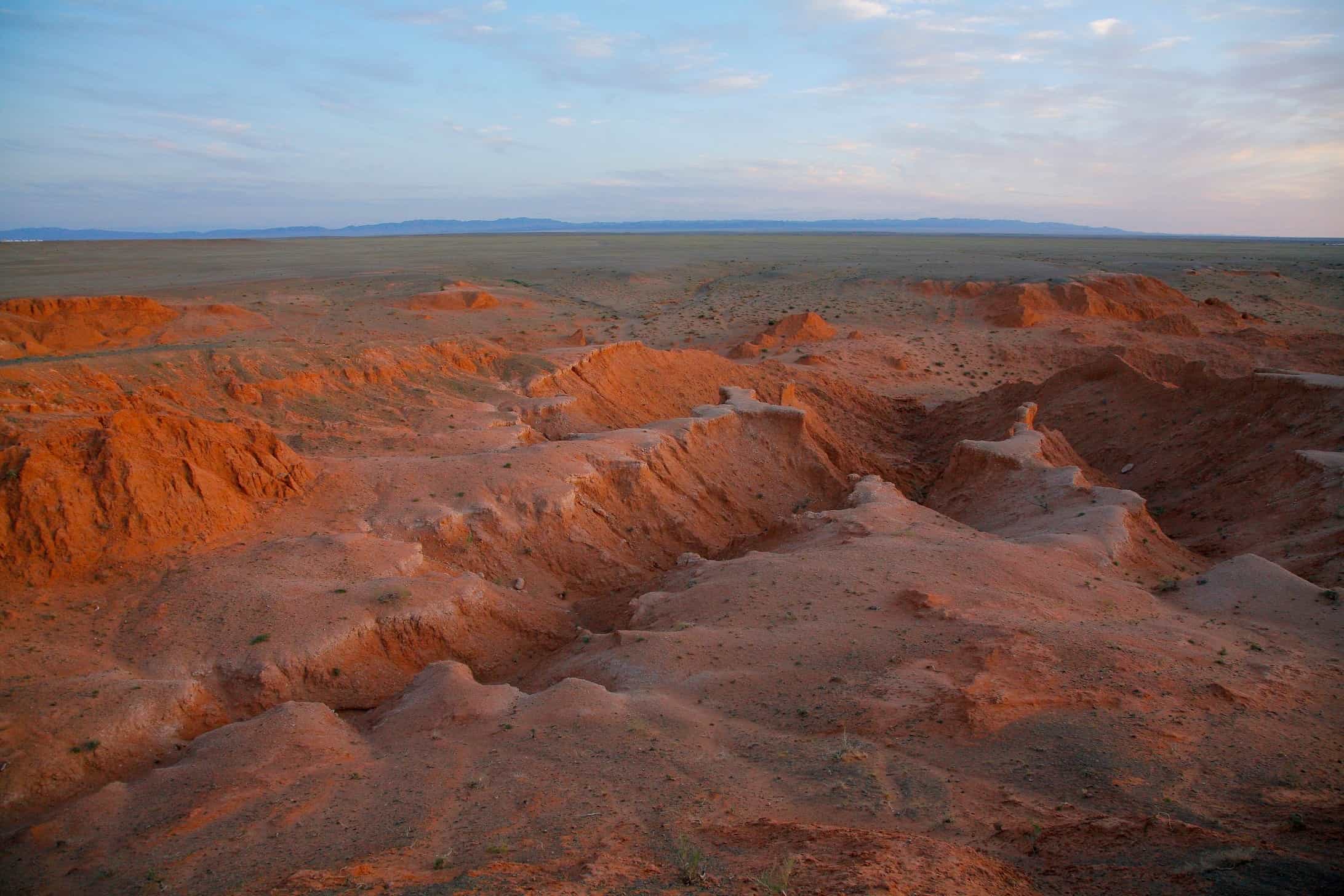For many, they imagine Mongolia as a wasteland covered with dust and sand. While that may be true for the slice that is home to the Gobi Desert, this buffer country nestled between China and Mongolia is a magical place home to a myriad of different landscapes. As the ancestral home to Khans and nomads, Mongolia is steeped in history hidden among its natural wonders. For those that seek to explore it, their journey should begin at these five amazing sights, but it will likely only ignite a hunger for more.
Gun Galuut Nature Reserve
 https://www.flickr.com/photos/massimobottelli/
https://www.flickr.com/photos/massimobottelli/
Gun Galuut Nature Reserve sits 130 kilometers southeast of Mongolia's capital of Ulaanbaatar. Gun Galuut is renowned for the diversity of its ecosystem in such a small area. Within the boundaries of the nature reserve, visitors can tour high mountains, sprawling steppes, rivers, lakes and wetlands, all of which are untouched by the hands of man. The vast steppes are eternally popular to those touring in Mongolia as they are where the land seemingly meets up with the sky. The more fit visitors will find adventure hiking the twin peaks of Baits and Berkh in the mountain range. Those looking for native wildlife will have no problem finding it along the Kherlen, the longest river in Mongolia and the Tsendiin Burd wetlands along its shores. A number of land animals gather along the banks of the river to drink and graze while water and wetlands birds nest along the shores.
Kharkhorin Erdenezuu Monastery
 https://www.flickr.com/photos/zz77/
https://www.flickr.com/photos/zz77/
Kharkhorin was once the ancient capital of Mongolia after it was established by Chinggis Khan in 1220. For 140 years, this city in the Orkhon Valley was the site of prosperity and government for the united Mongol tribes until Chinese armies destroyed it in 1391. Today, Kharkhorin is seemingly nothing more than a small town home to a couple thousand residents, but the landscape hides many archeological assets. One of the few ruins of old Kharkhorin that remains intact is the Erdenezuu Buddhist Monastery, one of the very first Buddhist monasteries built in the country. With vast walls of 400 meters and 108 stupas that surround it, this ancient building is a living symbol of Kharkhorin. While not structurally stable to house monks any longer, there is a team that continues to care for the buildings and the grounds so as to not see it fall into disrepair any further. Guests can tours the grounds and many of the buildings to learn a little more about Mongolia's ancient capital and the monastery itself.
Bayanzag
 https://www.flickr.com/photos/djfision/
https://www.flickr.com/photos/djfision/
Known as the Flaming Cliffs, Bayanzag is one of the most famous places in Mongolia. This red rock maze of canyons and steppes was once part of an ancient sea. Bayanzag was made famous by American explorer Roy Andrew Chapman that spent two years exploring the Gobi Desert in the 1920s. During his time, Bayanzag became his main focus after discovering several dinosaur fossils and perfectly preserved eggs, enough to fill the saddle bags of 70 camels upon his return to civilization. Today, archeologists return every so often to perform digs, but the area is primarily dominated by visitors hoping to stumble over the next big find or just explore the beautiful area in general.
Khongor Sand Dunes
 https://www.flickr.com/photos/massimobottelli/
https://www.flickr.com/photos/massimobottelli/
For those that want to explore the Gobi Desert outside of Bayanzag, the Khongor Sand Dunes is perhaps one of the most unique places to do so. Also known as the "singing sands," visitors are instantly able to hear how it got the nickname. As the wind rushes through the dunes, it makes a high-pitched sound like that of an airplane engine about to take off, although not quite as brain-numbingly loud. Aside from their talented singing voice, the dunes are the largest accumulation of sand in the Gobi Desert. They rise abruptly from the grassy plains beyond, reaching heights of 800 meters and extend over 12 kilometers. Swept into constantly changing shapes and designs by the wind, this is easily one of the most impressive attractions in Mongolia, dazzling visitors with its paintings of golden sand against the lush green backdrop.
Dornod Mongolia Steppe
 https://www.flickr.com/photos/jmenj/
https://www.flickr.com/photos/jmenj/
The Dornod Mongolia Steppe holds one of the largest and last great plain ecosystems on earth. Thankfully, Mongolia has recognized its importance to their history and landscape. Today it has been the target of a multi-million dollar environmental protection project that will see this beautiful natural landscape untouched by urban development and the animals of the fragile environment protected. While being largely one of the last undisturbed grasslands in the world, it is dotted with the tents of traditional nomadic herders that are permitted to carry on the country's age-old tradition here among the fields of feather grass. While visitors may glimpse the nomads and their herds of cattle, goats and horses, a more common sight are the massive herds of Mongolia's white-tailed gazelle. The steppes and grasslands her are home to 70% of Mongolia's gazelle that can roam in herds up to 20,000.


